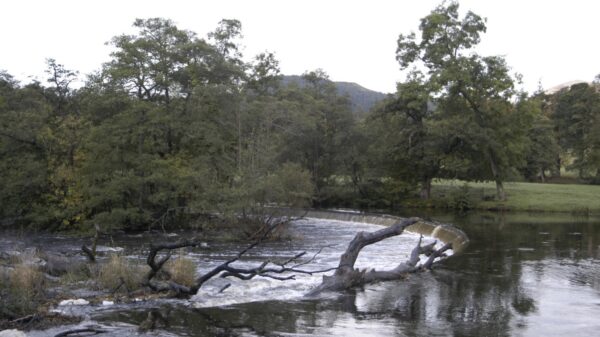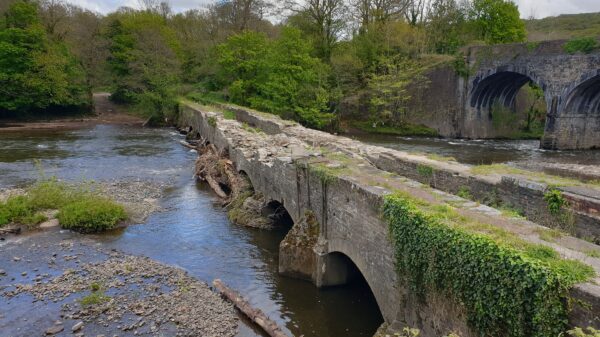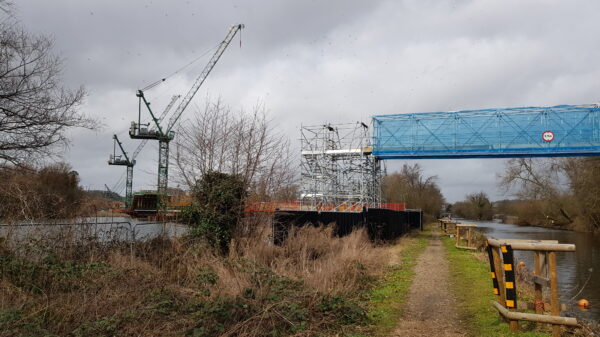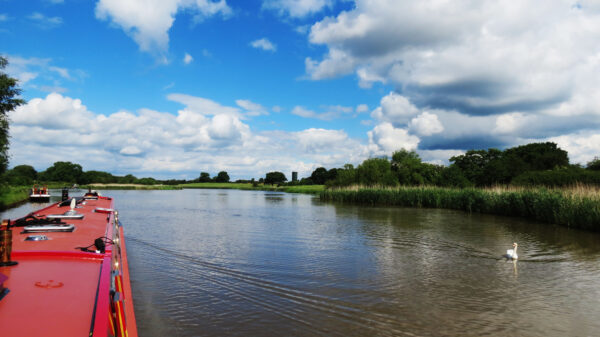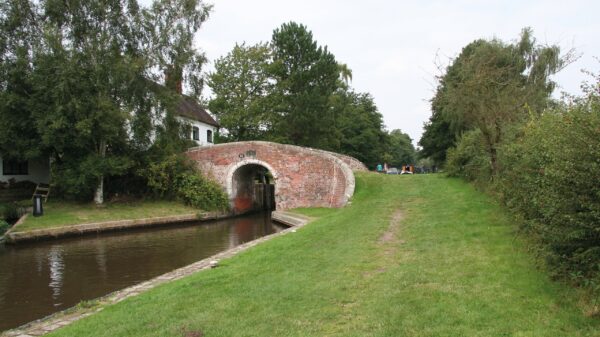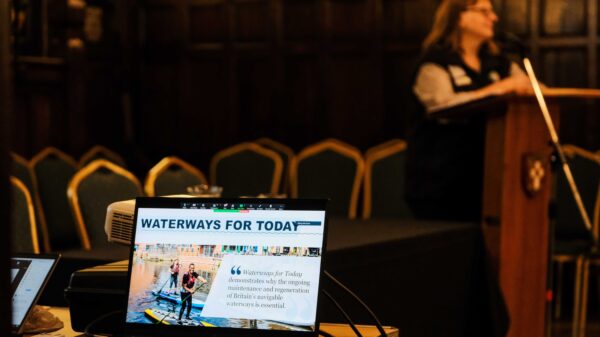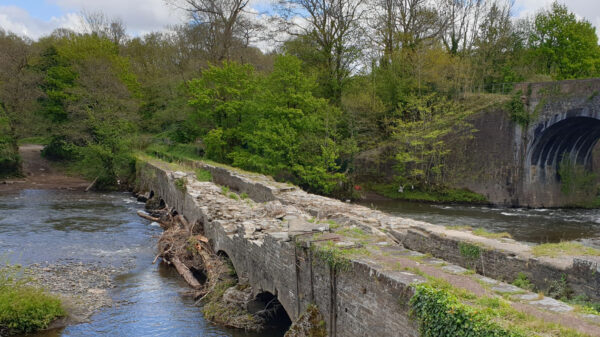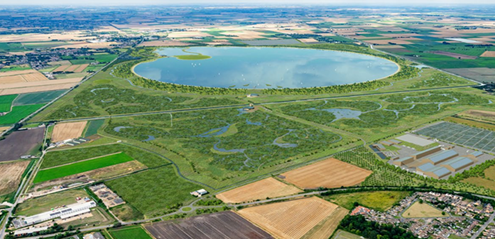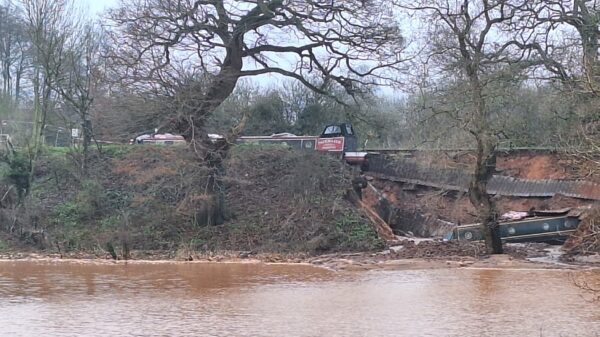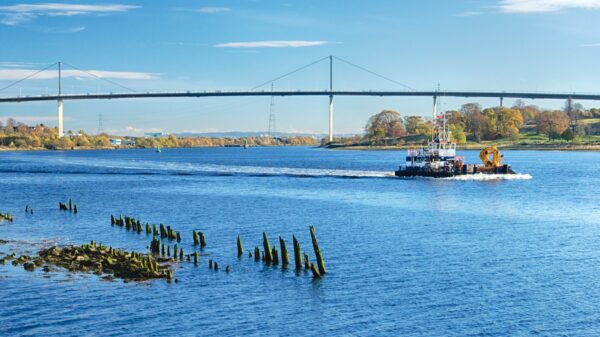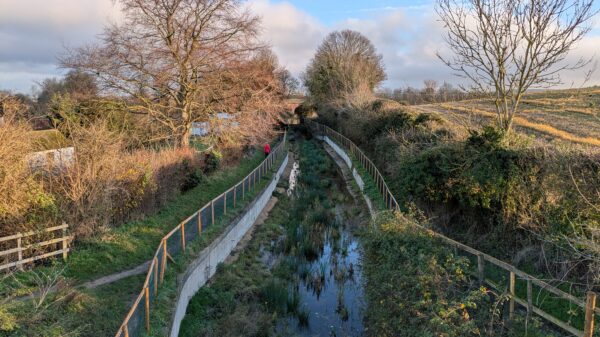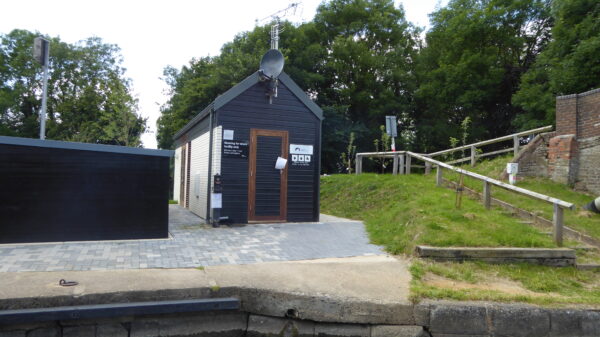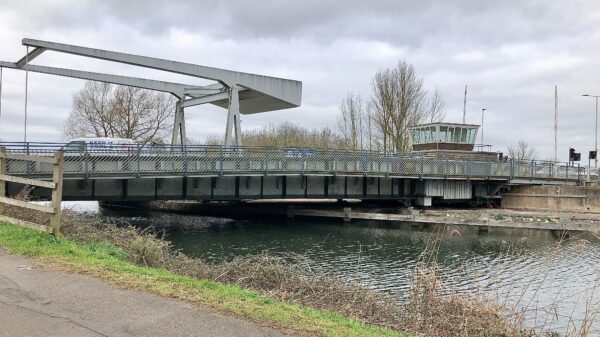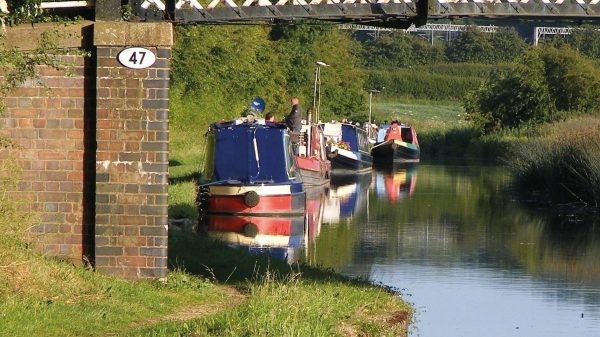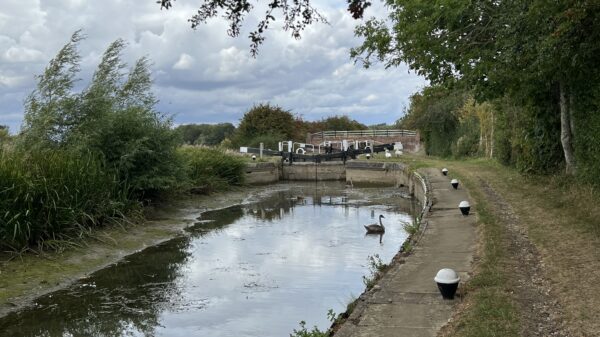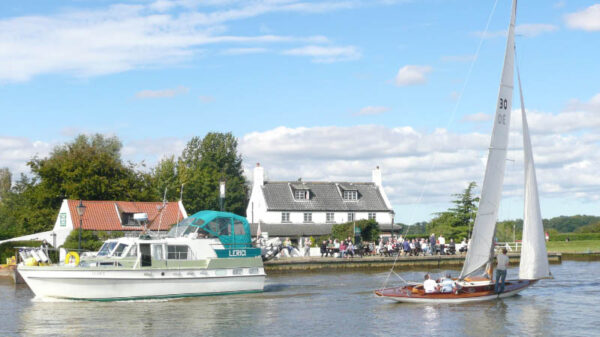Photo Credit : NNSS Image – Trevor Renals
What is the difference between a signal crayfish and a native crayfish?
The signal crayfish is lobster-like in appearance and reaches a maximum size of 16-18cm.
Its claws have red undersides with a small turquoise/white blotch on the upper surface at the claw hinge. The upper surface of this species is usually brown to greenish-brown, while the lower surface is often a contrasting bright orange or red. The signal crayfish has a distinctly smooth ridge running along the middle of the rostrum (the foremost projection of the carapace).
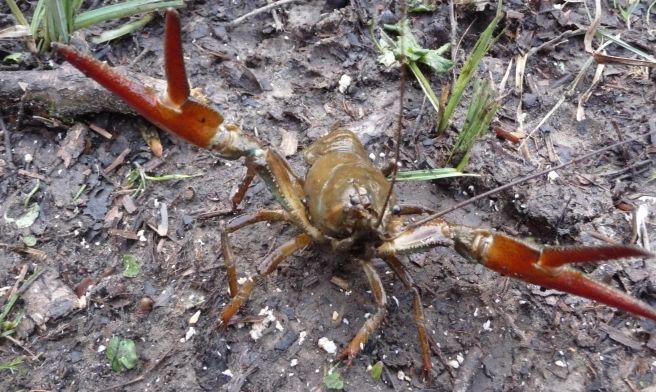
In comparison, the native white-clawed crayfish is much smaller (under 12cm), with a brown to olive pitted body. The underside of the claws are usually a dirty-white colour – never red.
The white-clawed crayfish was once a widespread and common species in English and Welsh rivers, but has suffered a decline of 50 – 80% across its European range in the last ten years and is classified as ‘endangered’ on the IUCN red list of threatened species and is at risk of global extinction.
Why are there two types of crayfish in britain’s canals and rivers?
In the 1970s, the British government introduced the signal crayfish (Pacifastacus leniusculus) from North America to UK waters. The crayfish plague had ravaged native crayfish populations in Europe and it was seen as an attractive commercial species for export to the lucrative Scandinavian market. Unfortunately, they are a carrier of crayfish plague and it is likely they passed it to the native white-clawed crayfish (Austropotamobius pallipes) in the UK.
Signal crayfish soon escaped from commercial fisheries and began to outcompete the native white-clawed crayfish for habitat and food. They have decimated the native crayfish populations. Signal crayfish cause further problems by burrowing into river and canal banks causing erosion, bank collapse and sediment pollution. In addition, the signal crayfish is a voracious predator. It feeds on a variety of fish, frogs and invertebrates, as well as plants, and even eating its own species.
Where are signal crayfish in Britain?
The signal crayfish is well established in England and Wales, especially in the south-east of England. They are not as prevalent in Scotland but several well-established populations have been recorded.
Signal crayfish are able to disperse up and downstream, cross most natural and artificial barriers and travel over land to reach water bodies nearby. Dispersal distances of over 300m in 2 days, and several hundred metres over land in one night have been recorded. Dispersal has been aided by human transfer and release of individuals, although this is now illegal.
The signal crayfish occurs both in still and slow-flowing freshwater environments, including rivers, streams, lakes, reservoirs and canals. They are also able to tolerate slightly salty water.
It takes shelter under rocks and boulders, within tree roots or in burrows and cavities within banks. In the winter, adult signal crayfish shelter in burrows and enter a state of torpor. These burrows are formed of many inter-connecting tunnels, and can be up to two metres deep.
The signal crayfish has a relatively high reproductive potential, with the female of this species laying between 200 and 400 eggs in the autumn. The female then carries the eggs around under her tail through the winter until the spring, when the eggs hatch. Once hatched, the young remain attached to the female’s tail until they are released in May or June. Signal crayfish reach sexual maturity at about 2 or 3 years old, and can live for up to 20 years.
What are the problems with crayfish in british waterways?
1. Environmental impact
Signal crayfish’s extensive burrows can destabilise banks, causing erosion and bank collapse, increasing flood risk and the silt load in the water. Their burrows displace threatened riverside species such as Britain’s water vole (Arvicola amphibius).
Native crayfish are becoming extinct through the spread of crayfish plague and competition for resources. Signal crayfish are bigger, grow faster, reproduce more quickly and are more tolerant of a wider range of conditions than the native white-clawed crayfish.
They feed on fish and amphibian eggs, tadpoles, juvenile fish, aquatic invertebrates, detritus and aquatic vegetation and where present reduce populations of native species and affect food webs.
2. Economic Impact
Signal crayfish burrowing can cause erosion of riverbanks. Burrows can be up to 2m deep, with many inter-connecting tunnels that weaken the bank. This can contribute to problems with flooding, livestock safety and stability of structures built on the banks.
Crayfish also take refuges from salmonid fish and predate fish eggs, which could reduce the value of commercial fisheries.
3. Crayfish Plague (Aphanomyces astaci)
This fungus-like disease is fatal to the endangered white-clawed crayfish. It spreads by waterborne spores released from infected crayfish.
The spores of crayfish plague can survive for up to two weeks in damp conditions, but can be killed by drying or disinfecting. Introducing new signal crayfish is usually the source of new outbreaks, however spores are also carried between waterways on wet fishing equipment, boots and boats.
CAn I catch crayfish in a canal or river?
You must not trap non-native crayfish without written consent from the Environment Agency (EA) in England or Natural Resources Wales in Wales. You also need permission from the landowner and any relevant angling clubs. Native crayfish are a protected species – you can only trap them for scientific purposes and not to eat or sell.
Find out more about Permission to trap crayfish
What can I do to stop the spread of signal crayfish?
The best defence against further spread of signal crayfish is biosecurity. If you use the waterway, you need to follow the Check; Clean; Dry guidelines.
Anglers:
- Dry or disinfect any boots or equipment before moving between waterways.
- Avoid fishing different waterways on the same day.
- The use of crayfish as bait is illegal in any form.
Boaters:
- Check the boat exterior for young.
- If removing boat from waterway, check the bilge and interior for any obvious crayfish and flush the engine cooling system through with fresh water from a piped supply
Canoeists:
- Drain the boat as usual and check the interior for any obvious crayfish
- If possible flush the boat out with fresh water from a piped supply
Under the Wildife and Countryside Act 1981 (as amended), it is an offence to release, or allow to escape, any non-native species into the wild in the UK except under licence. If you catch a signal crayfish, bring it ashore or into the boat for humane destruction.
Practising good biosecurity practice by everyone who uses or works in or around water (including fishermen, boaters and contractors), will prevent the transfer of animals or eggs between waters.
Find out more about how you can help stop the spread of invasive aquatic species at the GB Non-Native Species Sectariat (NNSS) website.
More information
Predators: In the UK, the signal crayfish is known to be predated by otters (Lutra lutra), American mink (Mustela vison) and predatory fish such as Atlantic salmon (Salmo salar) and European eels (Anguilla anguilla).
Trapping: Trapping trials have concluded that although numbers may be reduced during the short-term, traps may favour the capture of larger individuals. An unintended consequence of selective harvesting is the increased growth and earlier maturation of juvenile crayfish, which can cause the population to increase. It is not, therefore a sustainable long-term solution.

